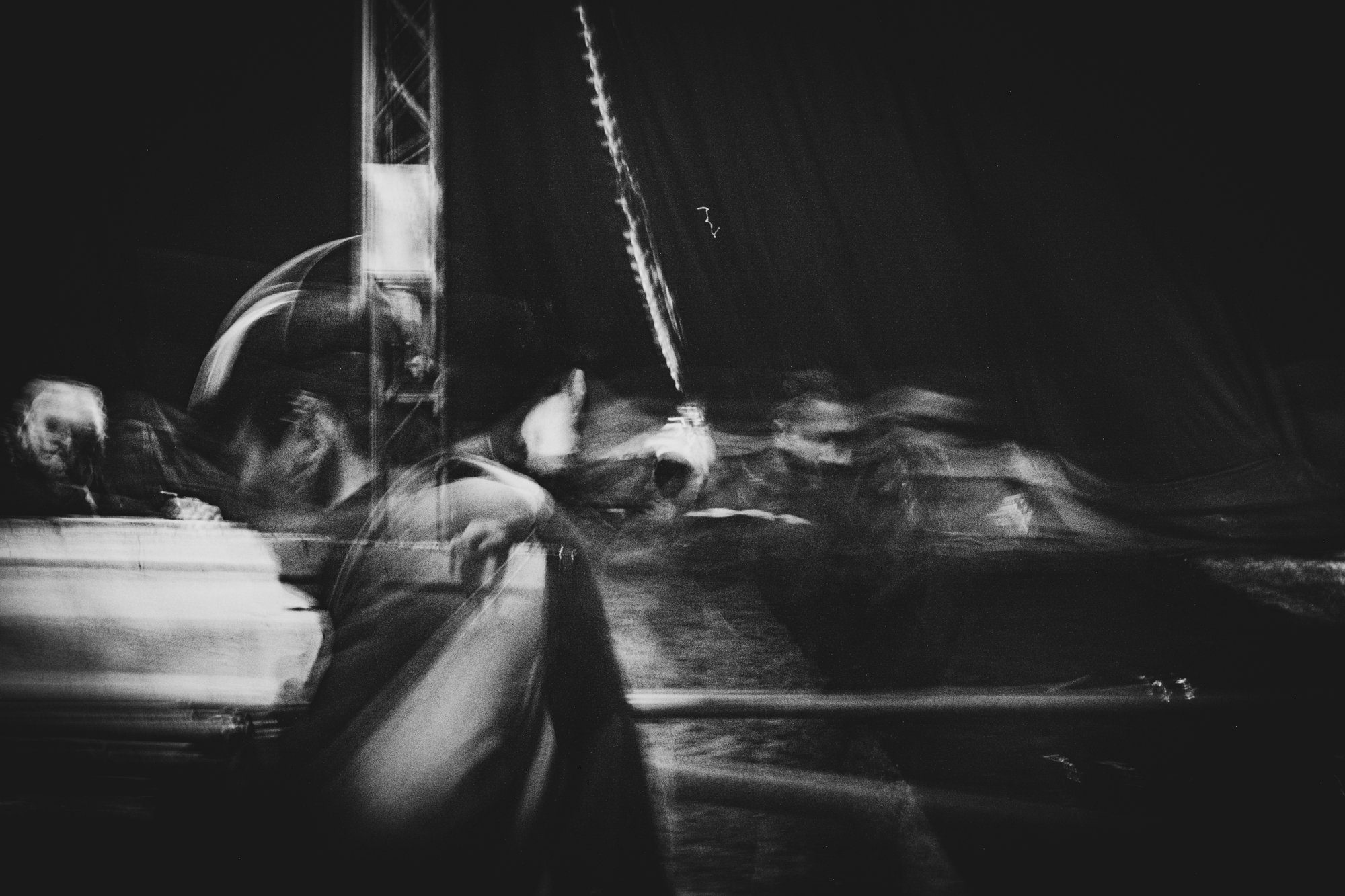Assignment One: People at Work
For our first assignment we were asked to take black and white photographs, using only a prime (35mm or 50mm) lens, with ISO restricted to 400 outside and 1000 inside. The topic was “work” and I lucked out by coming across a travelling circus as it rolled into town in the village of Redbourn, not far from St. Albans where I live.
Then I lucked out again - the person I approached to ask for permission to take some photos as they set up, Jay, is the partner of the circus owner’s daughter. It turns out they are Swiss French, as is my own partner, and Jay did his GCSE Photography so was sympathetic to my need for access.
What was supposed to be a time limited assignment, I think we were supposed to shoot for a maximum of two hours, ended up being about two hours on the first evening and four the next morning.
Watching the big top go up isn’t something I’d ever done, nor really thought about previously, but it’s really spectacular, particularly as a photographic subject. There are lots of moving parts and people dashing around everywhere. It felt like a really busy construction site moving at pace which, of course, it kind of is.
Anyway, I shot hundreds of photographs and stuck with the rules for the most part. So about those rules. I don’t like the vast majority of black and white photography. As in, I don’t see any point in shooting or viewing black and white when colour photography has been around since James Clark Maxwell demonstrated the first colour photography process in 1861. There were those in the photography world who shunned the use of colour even as late as 100 years later - for example, Henri Cartier-Bresson, and it wasn’t until 1962 that the Museum of Mondern Art (MOMA) in New York, which a the time was the taste-setting institution for photography, held it’s first solo colour photography exhibition for none other than Cartier-Bresson’s fellow Magnum contributor, Ernst Haas. That exhibition was over 60 years ago, colour photography having been widely adopted by both amateurs and professionals since then. Indeed, in 2024, just one manufacturer, Leica, produces a Monochrome camera. So why shoot black and white? I honestly have no idea - I certainly felt this limitation reduced the impact of my photos.
The focal length and ISO restrictions were a different story. Using a 35mm (I used the FujiFilm 27mm “pancake” on my ASP-C X-T5, an approximate equivalent of 35mm on a full-frame camera body) forced me to get in close. At some times I felt too close. This put me really out of my comfort zone, having only really photographed subjects like this with a longer lens so that I was well and truly out of the way. And I found I liked it. There’s nothing like feeling the wind and smelling the sweat as people rush around with long steel rods in the darkness - I nearly started giving them a hand at several stages just because, well, I felt like I had become part of it.
The ISO restriction also proved useful. My best shot, taken inside the darkness of the big top and showing a man using his whole body to pull some of the heavy tarp, was an accident of slow shutter speed. My second best shot (IMHO), of men working frenetically around the trailer containing metal poles, was due to the same challenge.
Pulling the Tarp
Frenetic Energy
So what did I learn? That sometimes a short lens and slow shutter are useful in that they change your story-telling in interesting, probably unrepeatable, ways.
And I also learned something else, having the next week shown my stack of about 30 images to my fellow MA students during a tutorial: editing down to a smaller number of images is really hard when you feel invested in having created them, as I had become. Thankfully I got it down to about 12 shots…
MA Project One: Work - a photo essay about a travelling circus rolling into town, setting up their home on the road, and putting up the big top.

